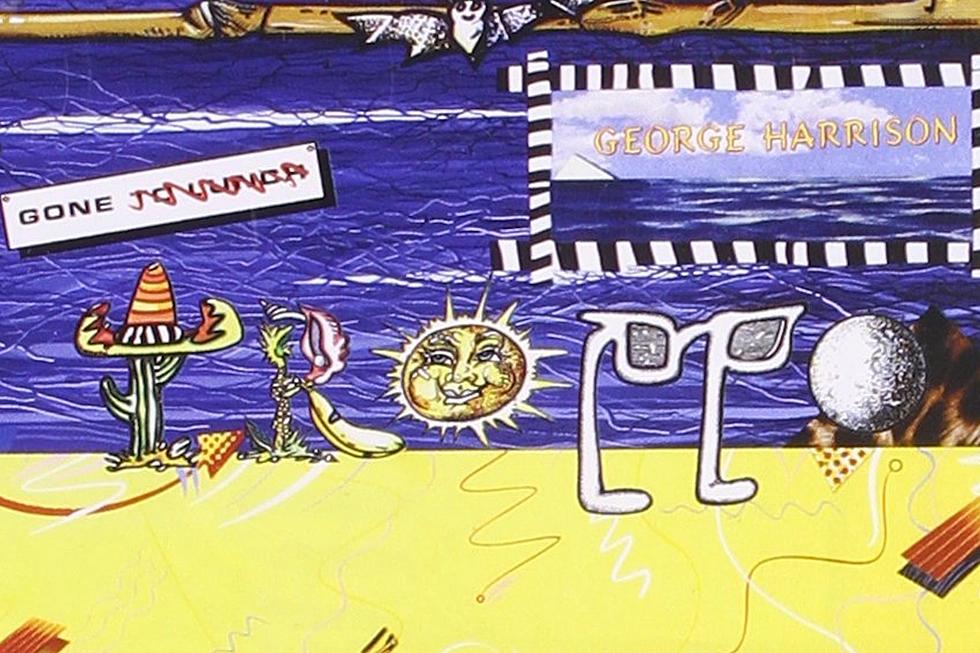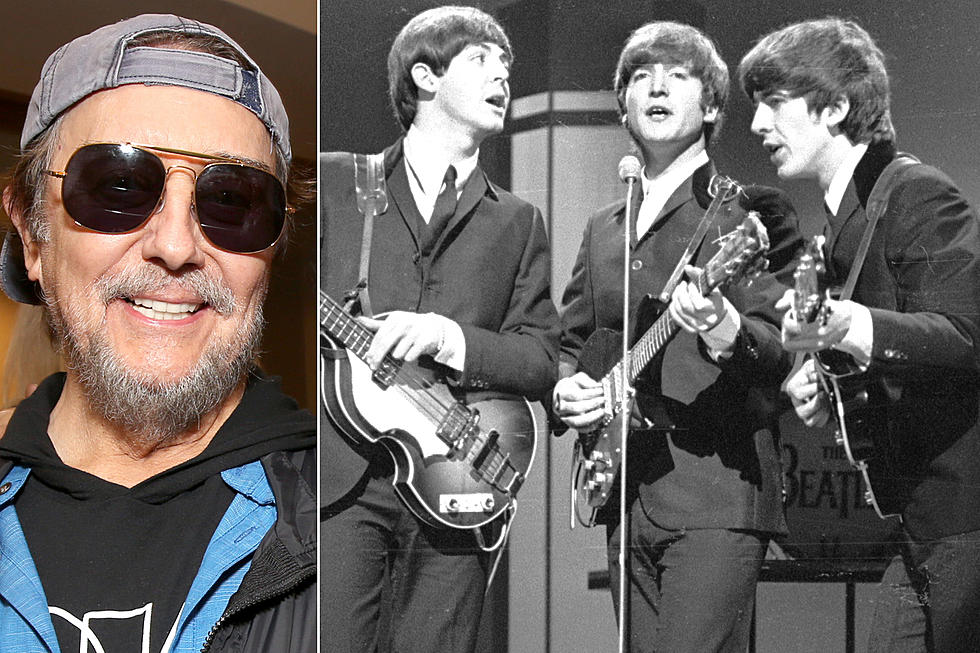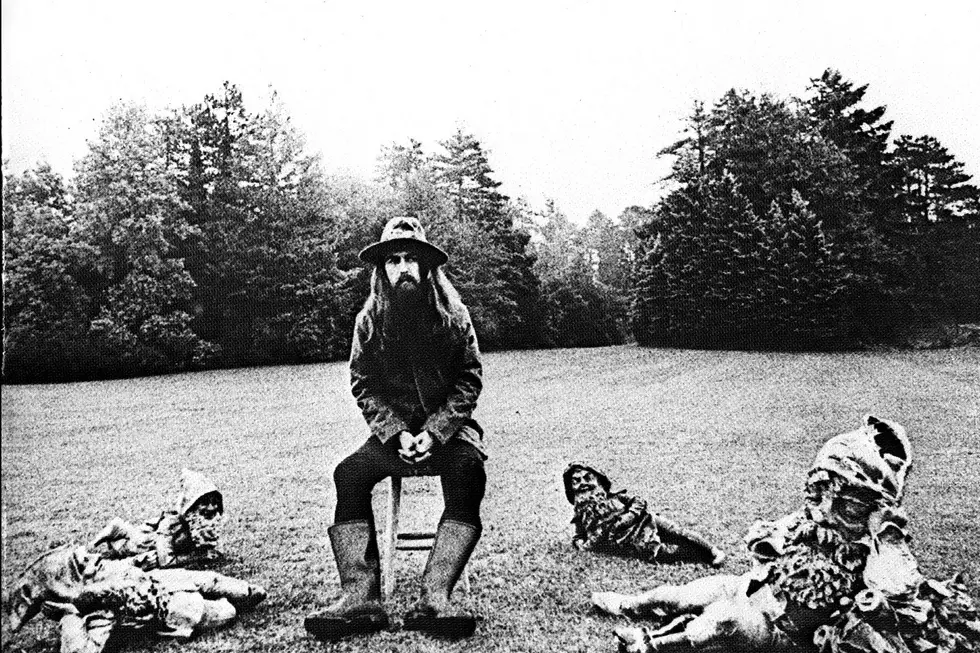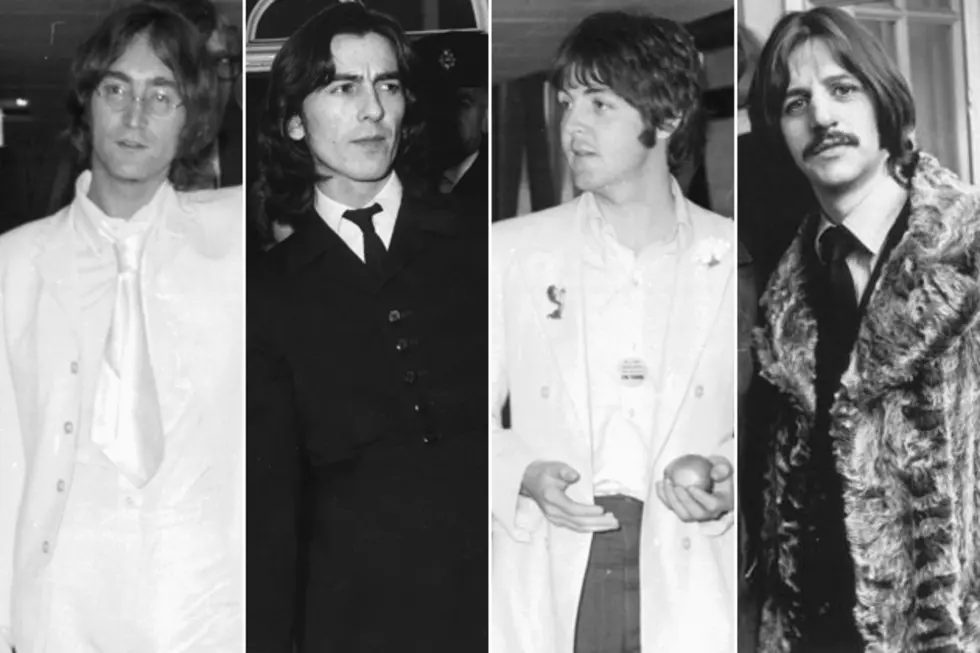
When George Harrison Looked Inward on ‘Gone Troppo,’ Then Disappeared
Even by George Harrison's uneven solo standards, Gone Troppo was a notable flop. Blame might fall on an aging target audience, to Harrison's refusal to promote it, to his quarrelsome label, to MTV-era production missteps. Beneath those then-contemporary synthesizers, however, lay a few things worth examining again.
Despite having spent a lengthy period tangling with Warners Bros., Harrison had found a new center within his marriage and the birth of a child. Taken together, that led to a surprisingly cheery, though determinedly inward set of songs for Gone Troppo, released on Nov. 5, 1982. It’s an album marked by a desire to become a part of smaller things after the big things have let you down.
The project, actually, could be favorably compared with the pastoral joys of John Lennon’s earlier Double Fantasy, though it never is. Instead, Gone Troppo — which Harrison never toured behind — sunk to the bottom of his discography as the last, ever-forgotten album on a miserable contract.
With George puttering around at home, the story was that his brother – a gardener at the Harrison estate – didn’t even know that Gone Troppo had been issued.
"I don’t like to be on TV and do the interviews necessary to promote it," Harrison told Film Comment in 1988. "I don’t really like being famous. I suppose I still am, but I don’t really think of myself as a famous person. ... I’ve managed to find a balance between show business and a kind of peacefulness. It feels very nice."
That kind of smaller-scale approach permeates the album, which followed an all-star cast on 1981’s pasted together mish-mash Somewhere in England. He worked with several of the same foundational players, and included only a small smattering of featured guests, among them Deep Purple’s Jon Lord and long-time confederate Billy Preston.
Listen to George Harrison Perform 'That’s the Way It Goes'
Then Harrison went and started the album with the keyboard-driven “Wake Up My Love,” as dated an item as any Beatles-related '80s release this side of "Spies Like Us." Released as the album’s first single, it bears an uncomfortable resemblance (both in tone, and in chart performance) to “Teardrops” from Somewhere in England. Neither reached the Top 40 in America, and both finished unranked in the U.K.
Beneath the sophomoric synth riff, however, there seems to be a good song struggling to get out, as Harrison cries: “Christ, I’m looking for some light.” The subsequent “That’s the Way It Goes” finds him resigned to that darkness, becoming absorbed in a potent rumination on the slide. It’s a notable departure for a performer best known for a determined kind of proselytizing on tracks like from “Awaiting on You All” and “Living in the Material World” to the more recent “That Which I Have Lost” — and the first hint of the more mainstream turn that Harrison would take on 1987’s comeback Cloud Nine.
Later, “Mystical One” finds Harrison looking not just for a peaceable path, but one that doesn’t require him to act as both rocker and teacher. The utterly remarkable “Unknown Delight,” written for his newborn son Dhani, reflects an emerging focus on life’s personal joys. Harrison’s contentment is not only complete, it’s deeper than anything he’d previously contemplated.
"I think the first thing is I stopped being as crazy as I used to be," Harrison told Rolling Stone in 1987, "because I want this child to have a father for a bit longer. Also, I think with a child around I can realize what it was like to be my father. At the same time, you can relive certain aspects of being a child. You can watch them and have all these flashbacks of when you were the kid. It somehow completes this generation thing."
There are a couple of near misses — and one other complete whiff. The romantic dobro-driven “Greece,” for instance, would have been a touching success but for some needless spoken-word references to Greek-related esoterica.
Listen to George Harrison Perform 'Unknown Delight'
Harrison takes his title-track tribute to a newly purchased island home in the Coral Sea off the coast of Australia too far when he adds a few lines of pigeon English — ruining a song that undulates along with this delightful sense of free-wheeling promise on the strength of producer Ray Cooper’s marimbas. And even Billy Preston, who was always quick with a smile, is unable to save the utterly maudlin, strangely misplaced “Baby Don’t Run Away.”
Still, within the consistently overlooked Gone Troppo lay the seeds of Harrison’s looming third-act resurgence — beginning with a cover of the Stereos’ obscure 1961 song “I Really Love You.” He would return to the same dusty stack of old albums for 1987’s Jeff Lynne-produced “Got My Mind Set On You,” catapulting to the top of the charts with a song originally issued by the equally unsung James Ray in 1962.
Harrison also issued a tough 1984 update of Bob Dylan’s largely forgotten “I Don’t Want To Do It” prior to joining forces with the producer/superfan Lynne, but by then he was in the midst of a five-year period between albums. Harrison guessed that it was an outgrowth of his general distaste for stardom, coupled with changing trends.
"Then’s then, and now’s now," Harrison told Film Comment. "In the late '70s, I just sort of phased myself out of the limelight. And then all the new generations come up. You get older and change your appearance, and they forget what you look like."
Gone Troppo would end with a flourish, as Harrison unfurled the Beatles-esque “Dream Away” before settling into a melancholy dream-state not unlike “Blue Jay Way” — but nowhere near as boring — on the White Album-era leftover “Circles.” The stage was set, even if no one knew it just yet, for George Harrison’s return.
The Most Awesome Live Album From Every Rock Legend
See the Beatles in Rock’s Craziest Conspiracy Theories
More From Ultimate Classic Rock









